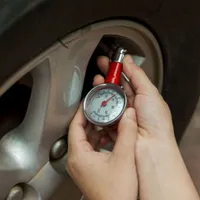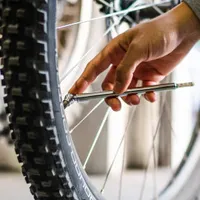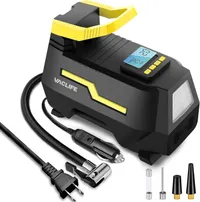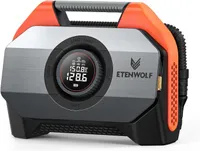The importance of properly inflated tires for vehicle safety and performance cannot be overstated. This guide provides an overview of the risks associated with incorrect tire pressure and offers a step-by-step process for ensuring your tires are properly inflated.
Table of Contents
Importance of Proper Tire Inflation
Impact on Vehicle Performance
Proper tire inflation has a significant effect on various aspects of vehicle performance.
- Effects on braking distance: Correct tire pressure ensures optimal contact between the tire and the road, improving braking efficiency.
- Influence on tire lifespan: Over or under-inflation can lead to uneven tire wear, reducing the lifespan of your tires.
- Importance for steering accuracy: Properly inflated tires provide better handling and steering accuracy.
- Role in fuel economy: Correct tire pressure can help maximize your gas mileage, making for more efficient driving.
Safety Concerns
Incorrect tire pressure can lead to a number of safety concerns.
- Risks of underinflated tires: Underinflated tires can cause poor handling and increased tire wear. They also generate more heat, which can lead to tire blowouts.
- Hazards of overinflated tires: Overinflated tires are more susceptible to damage from road hazards like potholes and debris.
- Legal consequences of driving with improper tire pressure: In some jurisdictions, driving with improperly inflated tires can result in fines or other penalties.
Checking Tire Pressure
Equipment Needed
To check your tire pressure, you will need a tire pressure gauge. These are available at auto-parts stores and online. Pocket gauges, which can measure psi (pounds per square inch), are inexpensive, portable, and easy to use. There are two main types of pocket gauges: dial-type and pencil-type.
| Gauge Type | Image | Our Amazon Pick |
|---|---|---|
Dial-Type gauges have a round dial that looks similar to a clock face.
|  | |
Pencil-Type gauges are long, slender, and metallic, about the size of a pencil.
|  |
Finding Recommended Tire Pressure
The recommended tire pressure for your vehicle can usually be found in the owner’s manual or on a sticker inside the driver’s side door jamb or glove box door.
Alternatively you could use our Tire pressure calculator which finds recommended psi pressure for your car's model.
Check Your Tire Pressure
Follow these steps to check your tire pressure:
- Remove the cap from the tire valve on the first tire.
- Use your tire gauge to check the air pressure in the tire, ensuring the psi is at the recommended level.
- Note the pressure and compare it to the recommended pressure for your vehicle.
Inflating Tires
If your tires are underinflated, you will need to add air. This can be done at a local gas station or at home, if you have a portable air pump.
Inflating Tires at a Gas Station
- Park your vehicle by the air dispenser. You will need to reach all four tires with the air hose.
- Use the air hose to add air in short bursts.
- Check the pressure after each time with your tire gauge.
- If you add too much air, let some out by pressing the pin on the tire valve with the back of the air hose nozzle or with the little knob on the back of the rounded end of the tire gauge.
- Keep checking the pressure until you get it right.
Inflating Tires at Home
if you can't find a nearby spot with air pump for tires, consider the practicality of a portable air compressor. With options for your trunk or home use, it's a simple way to ensure your tires are ready for the road.

| Model | Carsun CAP-001 |
|---|---|
| Max pressure | 30-40PSI |
| Cord Length | 118 inches |
| Charger | 120W, 12V car lighter plug, 3A |

| Model | VacLife ATJ-1666 |
|---|---|
| Max pressure | 50PSI |
| Cords Length | 110 inches, 62 inches |
| Charger | 120W, 12V DC car lighter plug & 110V AC home |
Important Tip for Inflating Tires
Always check tire pressures when they are cold for accuracy. Driving causes the tires to heat up and the air inside them to expand, which can lead to inaccurate readings.
Conclusion
Proper tire inflation is crucial for vehicle performance and safety. Regular tire maintenance and pressure checks can help protect against tire blowouts and ensure more efficient driving. So grab your tire pressure gauge and check your tire pressure today! It’s as easy as following the steps outlined in this guide. Happy driving!
On a related note, you might be interested in an article about Why Do My Tires Keep Losing Air and How To Fix It.



